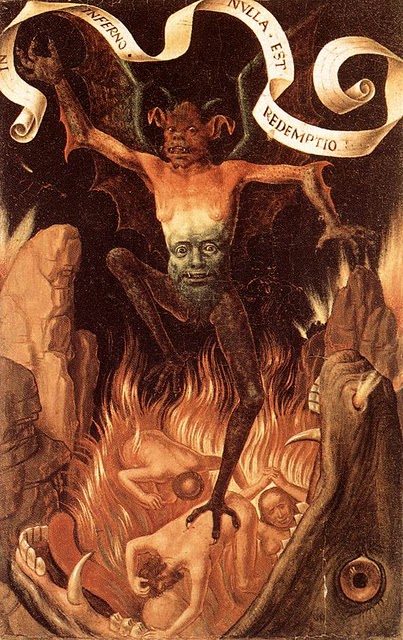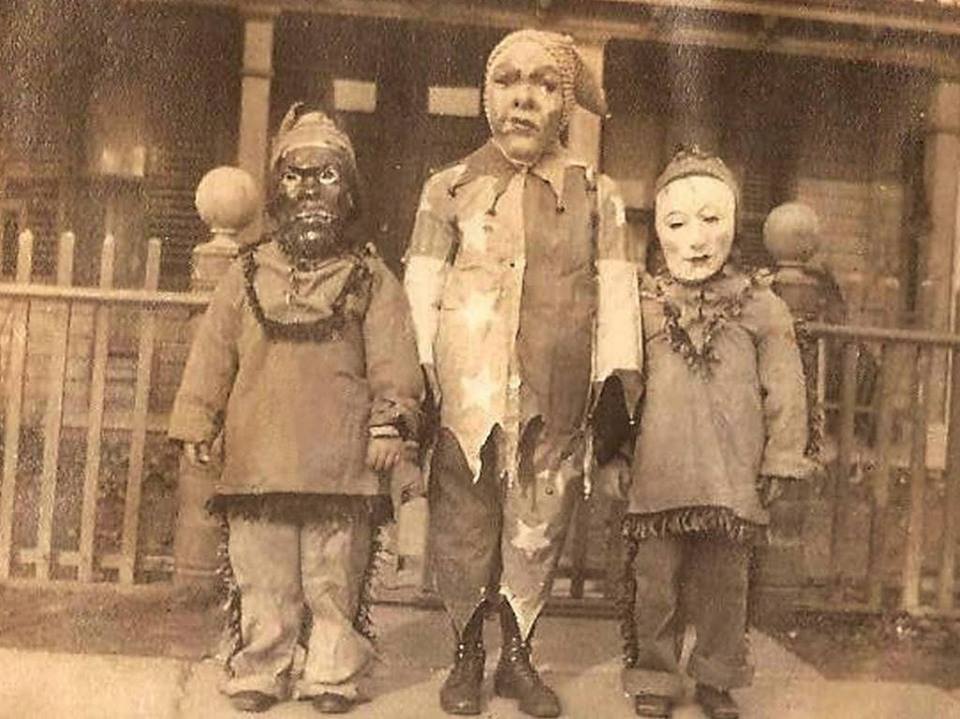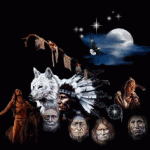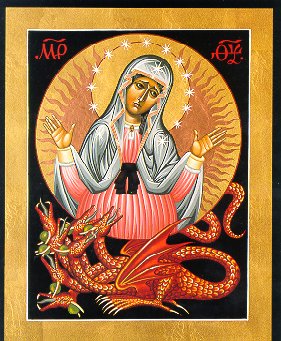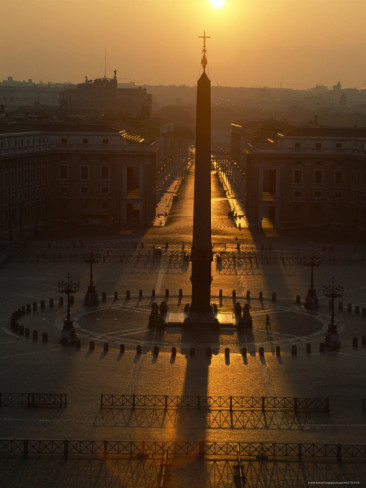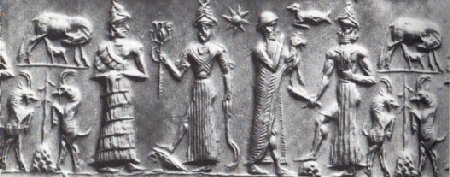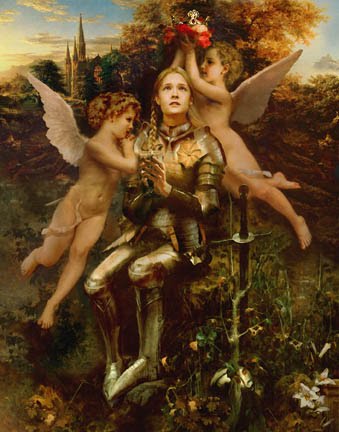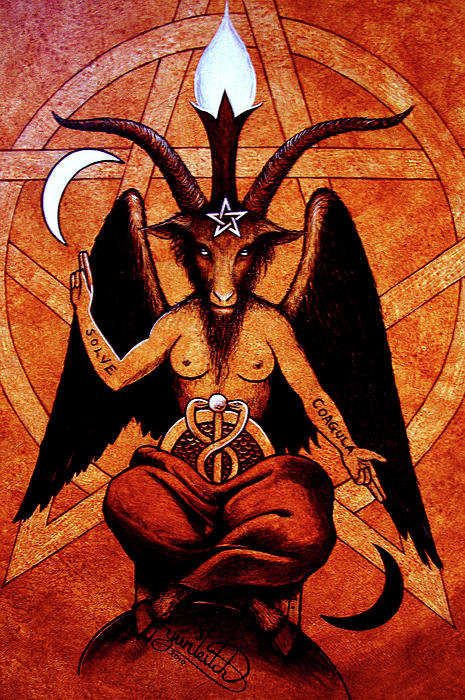When we celebrate Halloween, we are actually celebrating a Christian Holy Eve that is reserved for the Saints of the Catholic 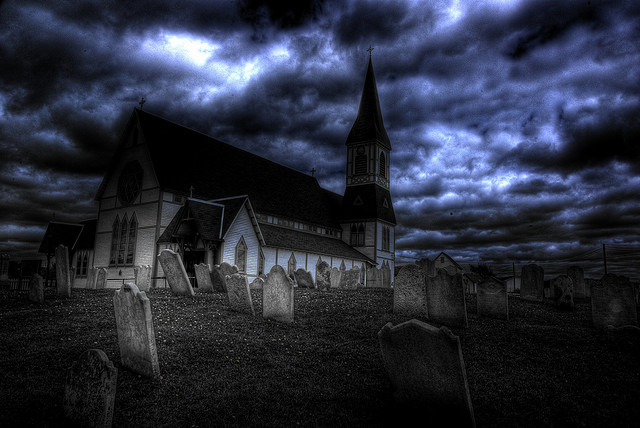 Church, as their day to dress up in costumes in order to reap revenge on their foes. What we call today Halloween, was originally derived from what was once known as “Hallow e’en” or “Hallow eve (Anglo- Saxon, kdlig, but _ Halig monath was September, and Halig-dag was simply a Holy-day.).”The word “Halloween” means “hallowed evening” or “holy evening”. “All Hallows” was formerly a current synonym of “
Church, as their day to dress up in costumes in order to reap revenge on their foes. What we call today Halloween, was originally derived from what was once known as “Hallow e’en” or “Hallow eve (Anglo- Saxon, kdlig, but _ Halig monath was September, and Halig-dag was simply a Holy-day.).”The word “Halloween” means “hallowed evening” or “holy evening”. “All Hallows” was formerly a current synonym of “
This day was originally celebrated as Samhain, (Bal or Baal Samhain and Beltine) – a sacred festival of the ancient Celts and Druids who were also known as pagans. This day of November 1 is the first day of winter, when the High Kings of Ireland held festival of traditional fires of Samhain at Tara Hill with a great feast to celebrate the vernal equinox, the death of the god of fire, Baal and a corresponding to the festival of his death.
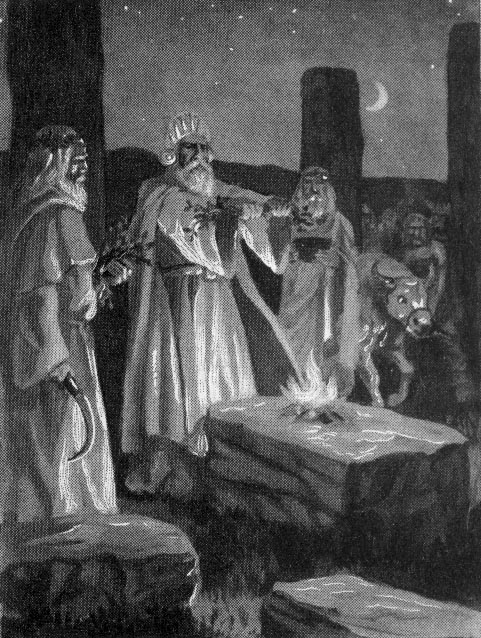 The meaning of the Gaelic or Old Irish word Samhain is “summer’s end,” and “Bal or Baal” signifies both in Gaelic as in Phoenician, “the lord of heaven”, and in the Punic language signified power, knowledge; bale in Irish signifies the same.
The meaning of the Gaelic or Old Irish word Samhain is “summer’s end,” and “Bal or Baal” signifies both in Gaelic as in Phoenician, “the lord of heaven”, and in the Punic language signified power, knowledge; bale in Irish signifies the same.
Halloween is also related to evening of the return of the dead. Many of our ancestors had believed in reincarnation. They held the belief that our children are really returning ancestors.
This gave rise to the use of pumpkins as Jack-o-laterns and later masks and costumes. The stories and actual use of carved pumpkins known as the Jack-o-Lantern, originate from the ancient Druids celebration of the festival of Samhain where they would light their sacred fires to the god of the forest on the advent of November.
These pagan festivals were later morphed into Irish, and the Scottish Highland tales. These pumpkins were “often carved with grotesque faces to represent spirits or goblins,” as an attempt to scare these wandering spirits and ghosts of long-ago.
Enveloped in darkness, we find the spirit of man is the candle of the Lord, which is our soul in the darkness and represented in the symbolism and myths of the Jack-o-lantern. This Gnostic story of a lost spirit is represented in Jack who roams about the dark countryside of Hades on All Hallow’s Eve (October 31) with his illuminated candle, in search is his soul that is located somewhere between heaven and hell. His pumpkin represents the as without darkness of his body, that inside holds the light of his spirit as within.
It is said that in the 6th century, the former Irish Druid, Saint Patrick was the first Christian to confront his kin in Ireland who were pagans and High Kings of the land, at their annual vernal fire on Samhain.
In order for St Patrick to symbolize his dedication to his new religion of Christianity and in condemnation of many of the brutal pagan rites associated with these pagan festivals, he had lit a fire in a different area than the traditional fires of Samhain on a hill called Slane Hill. Hence, St. Patrick had kindled or had taken over the divine fire and festival for the Church to signify the New Testament (New Law) under the banner of Christianity and the Universal Church known today as the Catholic Church.(2)
What was once a pagan festival from the time of Saint Patrick, until now where it is observed in the Christian Church as a celebration of all the remainder of the Saints who are the martyrs of our God that had died under torture, rather than to betray our Lord who did not have a special day dedicated to them on the calendar. All Saint’s Day would be when all their devotions are dedicated to this day that honors all the Saints rising together in glory, and of course millions of non-Christians who also unknowingly join in the great celebration on the eve of Halloween before November 1st. Hence, trick or treat!
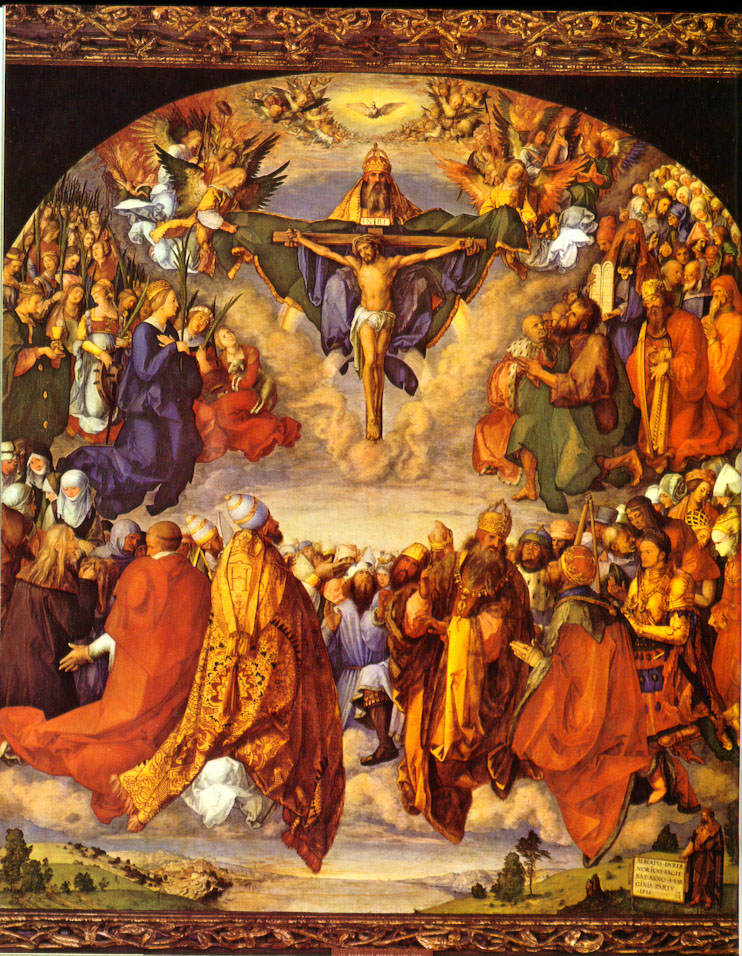 In 610, the Pope of Rome, Boniface IV presides over a Council of Rome and had ordered that the heathen Pantheon should be converted into a Christian church and dedicated to the honor of all martyrs. The festival of All Saints was first held on May 1st, but in the year 834 at the behest of Pope Gregory IV, the Roman Catholic Church changed the date of All Saints’ Day to November 1st (the same date as Samhain), while 2 November later became All Souls’ Day. Over time, Samhain and All Saints’/All Souls’ merged and helped to create the modern Halloween.
In 610, the Pope of Rome, Boniface IV presides over a Council of Rome and had ordered that the heathen Pantheon should be converted into a Christian church and dedicated to the honor of all martyrs. The festival of All Saints was first held on May 1st, but in the year 834 at the behest of Pope Gregory IV, the Roman Catholic Church changed the date of All Saints’ Day to November 1st (the same date as Samhain), while 2 November later became All Souls’ Day. Over time, Samhain and All Saints’/All Souls’ merged and helped to create the modern Halloween.
This event is explained well in this book;
“The Greek Church, as early as the fourth century, kept a feast of all martyrs and saints on the first Sunday of Pentecost. The object of this day in its inception was probably to do honor in bulk to all the lesser saints who could not have a feast specially set apart for them, as well as to all holy men and martyrs whose record had not survived.
A sermon of St. Chrysostom’s delivered on this feast is still extant. In the West, All Saints Day was introduced by Pope Boniface IV. in the seventh century, on the occasion of the conversion of the Roman Pantheon into a Christian church dedicated to the Virgin and all the martyrs. The anniversary of this event was kept on May 13.
But when Gregory III., about November 3, 731, consecrated a chapel in St. Peter’s Church in honor of all the saints, the date of the feast of All Saints was shifted, and it has ever since been November 1. From about the middle of the ninth century the observance of this festival became general throughout the West, and it has been retained to this day by the Anglican Church.(3)”
WHY DO WE WEAR COSTUMES?
Our tradition of wearing costumes is so the Saints have one last chance to gain vengeance on their enemies before moving to the next world. In order to avoid being recognized by any soul that might be seeking such vengeance. Just like Michael Myers had done in the 70’s Hollywood movie and “cult classic,” Halloween. It is at after midnight on November 1, when the souls of the Saints are said to go back to rest. This is explained by Prince Sorie Conteh, who wrote:
“It was traditionally believed that the souls of the departed wandered the earth until All Saints’ Day, and All Hallows’ Eve provided one last chance for the dead to gain vengeance on their enemies before moving to the next world. In order to avoid being recognised by any soul that might be seeking such vengeance, people would don masks or costumes to disguise their identities”.
In the Middle Ages, churches displayed the relics of martyred saints and those parishes that were too poor to have relics let parishioners dress up as the saints instead, a practice that some Christians continue in Halloween celebrations today. Academic folklorist Kingsley Palmer, in addition to others, has suggested that the carved jack-o’-lantern, a popular symbol of Halloween, originally represented the souls of the dead. On Halloween, in medieval Europe, “fires [were] lit to guide these souls on their way and deflect them from haunting honest Christian folk.
Gnostic Warrior Conclusion
Please keep in mind whether you are a Christian, atheist, Gnostic, or just an everyday Main Street Joe, if you celebrate Halloween, you are joining in  the official sanctified holiday of the holy Saints of the Church. The same Church, who not only made sure that we still celebrate this holiday to this very day, they also had instituted our very calendars and many other holidays such as Thanksgiving, Christmas, and yes, even April Fool’s Day.
the official sanctified holiday of the holy Saints of the Church. The same Church, who not only made sure that we still celebrate this holiday to this very day, they also had instituted our very calendars and many other holidays such as Thanksgiving, Christmas, and yes, even April Fool’s Day.
When we celebrate Halloween, we are actually celebrating a Christian Holy Eve that is reserved for the Saints of the Catholic Church, as their day to dress up in costumes in order to reap revenge on their foes. Hence, the eve or day before All Saints’ Day is Halloween and therefore today, a Catholic and Christian Holiday.(1)
RESEARCH:
The French call it ‘lhussainl and the The Scotch tradition is, that those born on All Hallows’ Eve have the gift of double sight, and commanding powers over spirits. Mary Avenel, on this so position, is made to see the White La y, invisible to less gifted visions.
St. Patrick, His Writings and Life By Saint Patrick, Muirchu Maccu Machtheni –
CHAPTER XV
“According to Prof. Bury (St. Patrick, pp. 107, 303), Muirchu (or his source), by a clever literary device, unites the features of two heathen festivals, on neither of which Easter could fall. It was at Beltane, the first day of summer (May 1st), that the fire was lighted at Tara, and it was at Samhain, the first day of winter (November 1st), when the HighKings held festival at Tara. Prof. Macalister, however (op. cit. pp. 367 ff.), defends the accuracy of Muirchu.
He suggests that there was most probably a great feast at Tara at the vernal equinox, the re-birth of the sun-god, corresponding to the festival of his death, on 1st November. “Easter in A.d. 433, the year of St. Patrick’s coming to Temair, fell upon 26 March. As the Paschal Fire was lit on Easter Eve, the festival which the saint violated was held on 25 March. This is the very date on which, in many places, the resurrection of the deity of vegetation was celebrated.”
St. Patrick kindled a divine fire. Tirechan (fol. 10 v° a), speaking of Bishop Kannanus, who is buried at Duleek, and who was ordained on this occasion by Patrick, says, “It was he who carried with him the first blessed fire, and carried home from the hands of Patrick the first wax candles to kindle a blessed smoke under the eyes and nostrils of the heathen folk and of King Loiguire and his magicians.”
Biographical Notices of the Apostles, Evangelists and Other Saints: By Richard Mant
“THE Church, having in the course of her annual services commemorated those individuals whom she esteems worthy of singular honour, and having now arrived nearly at the end of the ecclesiastical year, brings her series of commemorative festivals to a close, by devoting one to the memory of “ All Saints.” .
The Saints, intended to be commemorated on this occasion, are those holy persons, who having been sanctified by their admission into the Christian Church, and having under the influence of the Spirit of holiness endeavoured to serve God on earth in a manner corresponding to their holy vocation, are removed hence in order to their admission into a state of superior holiness and happiness. ’
For the term “ Saints” is commonly used in the New Testament, particularly in St. Paul’s Epistles, to denote Christians in general, because they are set apart and separated from the world for sacred purposes, and consecrated to the service of God, and so lie under a necessary obligation to be true and real saints: so that in this comprehensive sense it is as large as the word “ Christians ;” and stands opposed not to the unsound members of the Church of Christ, but to the world in general. In a more limited sense however it signifies those persons, who are “ holy,”
In a more limited sense however it signifies those persons, who are “ holy,” iiot by profession only, but in practice: who are Christians, not only in name hut in deed. And in a sense still more limited it is confined to those, who having fulfilled their part in the Church militant here on earth, are gone, in the character of “ the spirits of just men made perfect,” to increase the number of the Church triumphant in ‘heaven. It is for the commemoration of these holy persons, that the festival of this day is intended.”
SOURCES:
1. Dictionary of Phrase and Fable, Giving the Derivation, Source, Or …, Volume 1 By Ebenezer Cobham Brewer
2. St. Patrick, His Writings and Life By Saint Patrick, Muirchu Maccu Machtheni
3. Werner’s Magazine: A Magazine of Expression, Volume 24

Moe is the founder of GnosticWarrior.com. He is a father, husband, author, martial arts black belt, and an expert in Gnosticism, the occult, and esotericism.

